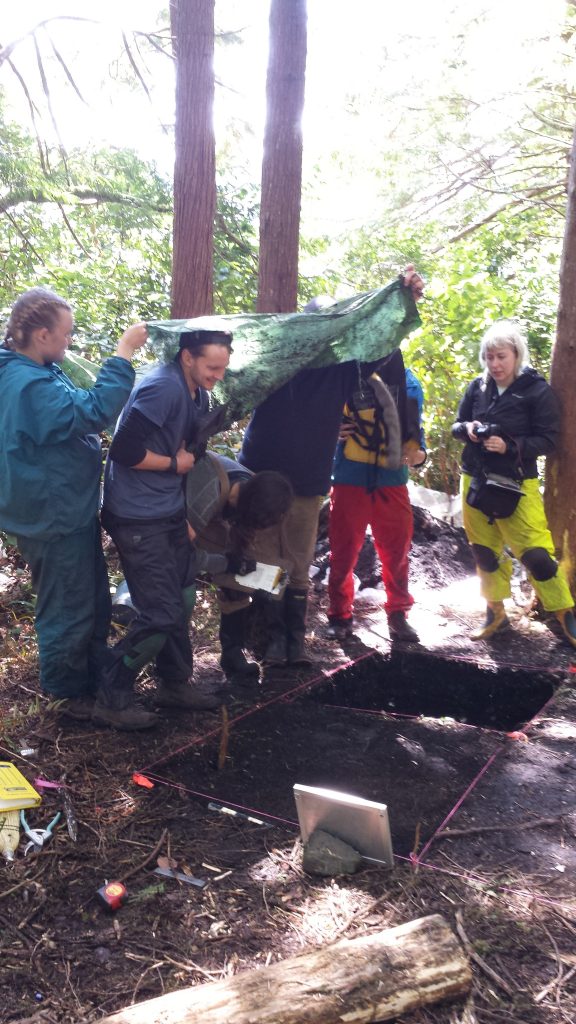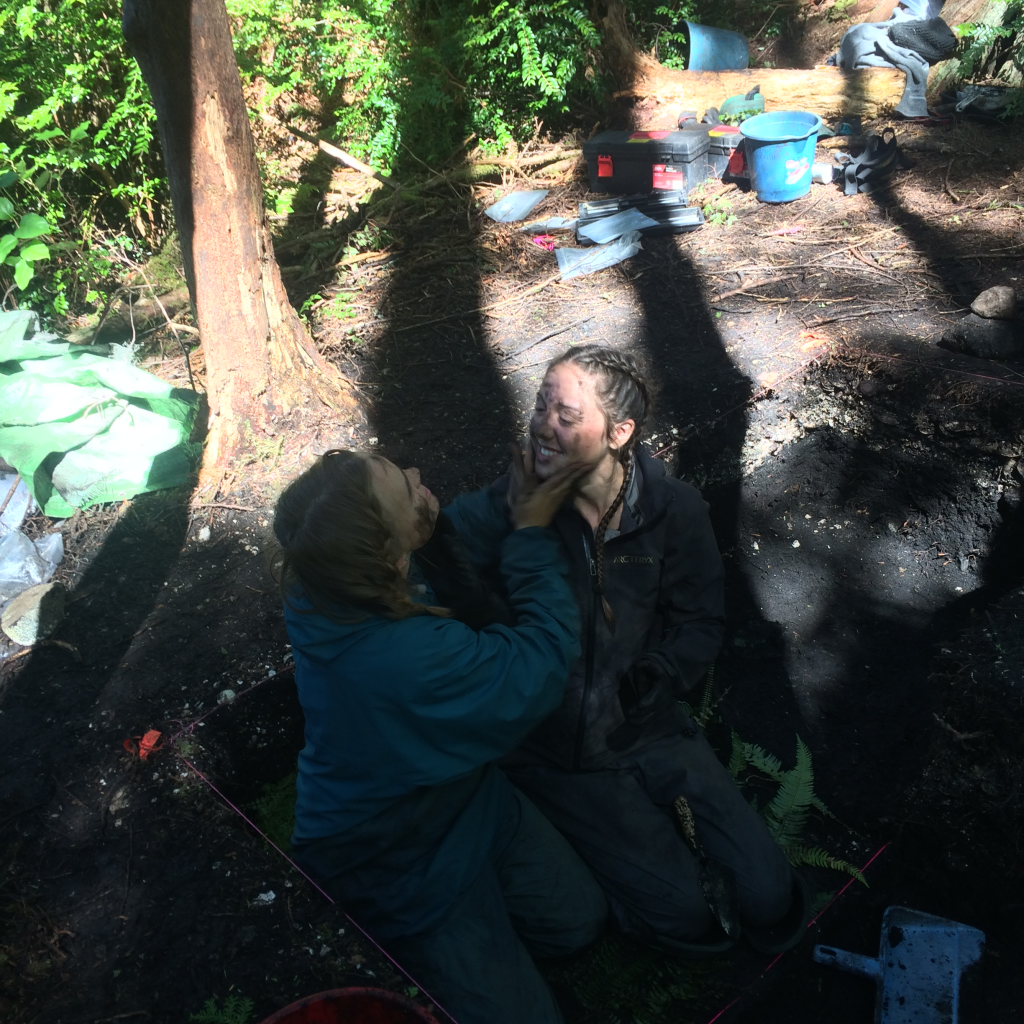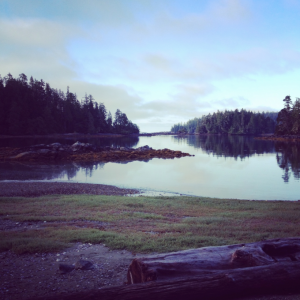
On the mornings of July 20th and 21st, my love for archaeology battled my love for sleeping as we got up early to dig test pits in the intertidal of Jacques Island at the site of Hup’kisakuu7a. To time our work with the low tide meant a wake-up time of 5.30am on the first day. My interest in archaeology won out over my desire for another hour in my toasty sleeping bag, and any yawns were soon dispelled by the fast rate of work as we excavated two test pits in a race against the incoming tide.
The aim of excavating in the intertidal area of Hup’kisakuu7a was to investigate the possible use of the site at an earlier time period, considerably earlier than the main focus on excavation on the midden site which is set back in the trees. Changing sea levels since the end of the last glacial maximum means that any very early habitation on the site would have been on what is the modern beach. Two intertidal test pits and artefacts found on the beach last year revealed a tantalising glimpse of past use, and as we started pulling Fire Cracked Rocks out from around 30cm below the modern beach surface we were able to confirm human activity at this location. Unfortunately we were unable to find any charcoal in the beach deposits that would provide a date for this early habitation.
The most spectacular moment came when an odd shaped lump bigger than a fist was pulled out of one pit, alas not the pit I was working in, immediately it was identified as an ear bone of a large whale.
It was hard work digging and screening through beach deposits, as the steep drop off in enthusiasm on the second morning showed. Although I have experience with dealing with lithics in the UK, I found it very hard to identify anything between the rough material and the wear on the flakes from being rolled around in the water, and the rejection of each flake presented with nervous hope was a little dispiriting. However with the expert help of Nicole and Bill I felt that I was getting a hang of it towards the end. I felt pretty proud when I got a positive ‘yes’ on a flake rather than a sceptical ‘hmmm’ and a raised eyebrow.
Excavating in the intertidal was a fun challenge, and it had me completely re-evaluating things that I thought I knew, which is always a good thing and one of the reasons I wanted to joining the field school this year. I’ve always been interested in the earlier occupation of North America and it was a great privilege for me to be able to contribute, in any way, to the growing picture of human habitation of the coast





